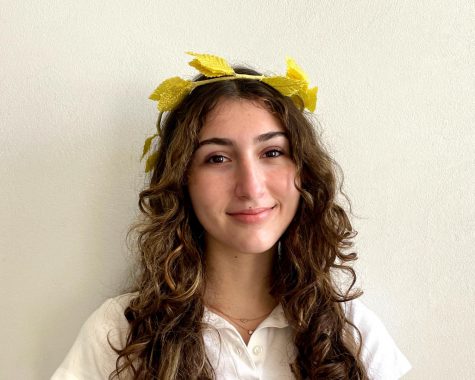Community members reflect on implementation of remote learning practices
Photo credit: Marley Mills
A sophomore English class taught by Stephanie Nicolard virtually touches hands on Zoom. Sophomore Marley Mills said that it was only one of the many fun activities they had done in class.
April 23, 2020
Before mid-March, the school day took place in the hallways, classrooms and courtyards of Archer. Now, however, school has shifted to bedrooms, backyards and kitchen tables. Sweatpants and t-shirts have replaced polos and skirts as the “uniform” of most students, who enter class through digital waiting rooms instead of waiting outside teachers’ classrooms.
Since Archer’s transition to online learning via Zoom on March 17, students, faculty and administration have adapted to the use of digital tools in addition to a new schedule. The Oracle sat down with community members to learn more about the transition to the digital school day.
Before leaving the walls of Archer, students and faculty had practice with video communication software Zoom. Faculty were trained on how to use Zoom on the Wednesday of the last week of in-person classes, and students were then instructed on how to use the platform by their English teachers on Thursday and Friday of that week. Warner described those two days of calibration as a “huge advantage” over schools that had to close without advance notice due to cases within their communities.
“Overall, I’ve been really impressed with the ways that teachers have very, very, very quickly iterated best practices for what works in a classroom and used research and guidance for that works best in a remote learning environment,” Warner said.
At the beginning of remote learning, classes lasted for 90 minutes with a half-hour lunch. On March 27, right before spring break, Warner sent out a revised schedule, which features classes that last for an hour and 15 minutes and an hourlong lunch. The schedule also incorporates a period dedicated to class meetings, advisory and Human Development classes for juniors and seniors.
In the traditional weekly email, Dean of Students Jenn Babin shared information on clubs hosting open meetings and connection opportunities led by faculty members. Offerings this week range from origami classes to movie trivia to poetry writing to discussions of how COVID-19 is affecting different communities.
“When we just launched into remote learning, it made sense to pare it down and say, ‘Okay, let’s just focus in on the classes and get that going,’” Warner said. “Now that that’s going we definitely want to be able to offer some love to our students with clubs and lunch.”
Though Warner is excited about the opportunities online learning provides, she also expressed concern about the increased amount of time students spend in front of a screen, which is a major change from in-person classes.
“One of the things I think Archer is known for and lauded for is the level of engagement in student-centered teaching and learning, and that’s hard to translate quickly and effectively to an online environment,” Warner said. “While Zoom is an incredible tool, being on a Zoom for more than 30 minutes can be a lot, so I think recalibrating how much direct instruction or classic lecture a teacher can or should do [is important.]”
Junior Jessica Tuchin also noted the increased screentime that comes with online learning but said she was happy with the ways in which her teachers have adapted.
“I definitely appreciate how the teachers are structuring classes to not be on Zoom the whole hour and a half,” she said.
English teacher Jennifer Dohr, who was interviewed when the 90-minute class period was still in place, said that planning how to use the increased class time was a “bit of an adjustment.” However, she expressed gratitude for the flexibility of her students throughout the transition.
“I’m just so amazed and proud of how everyone is showing up,” she said. “I mean, not a single absence, not a single kid spaced out.”
Considering the circumstances, Zoom has been an effective way to continue learning, according to sophomore Naya Ben-Meir.
“Personally I think it’s been good and I haven’t been stressed out online,” Ben-Meir said. “I can now relax in the mornings.”
However, Ben-Meir emphasized that she missed the “connections” she formed with students face-to-face.
“The only thing is not having that human connection, talking with other students, it’s an adjustment,” Ben-Meir said. “But I think it is a really good solution.”
Dohr and Warner expressed a similar sentiment, commenting on how difficult it is to miss out on face-to-face interactions with students.
“The reason I went into education, why most teachers went into education, is because we love working with students,” she said. “I really miss seeing you, and I know your teachers really miss being in rooms with you.”
However, Dohr described being able to see her students virtually as “some compensation” and expressed appreciation for the way her students are focused in class.
“We are living in such dark times, and I know we’re all turning on the news and seeing the possibility of hundreds of thousands infected and death tolls rising worldwide,” Dohr said. “Sometimes I just take a step back and think, ‘It’s amazing that thirteen, fourteen young people are willing to come together and talk about ‘Pride and Prejudice’ or ‘Hamlet’ or do calculus or comp chem.’”











